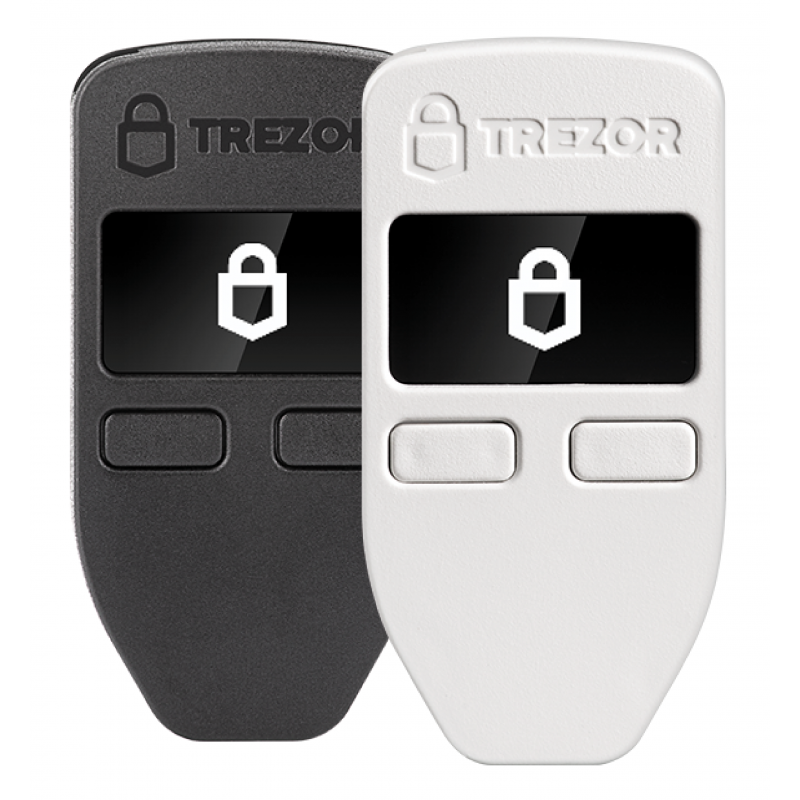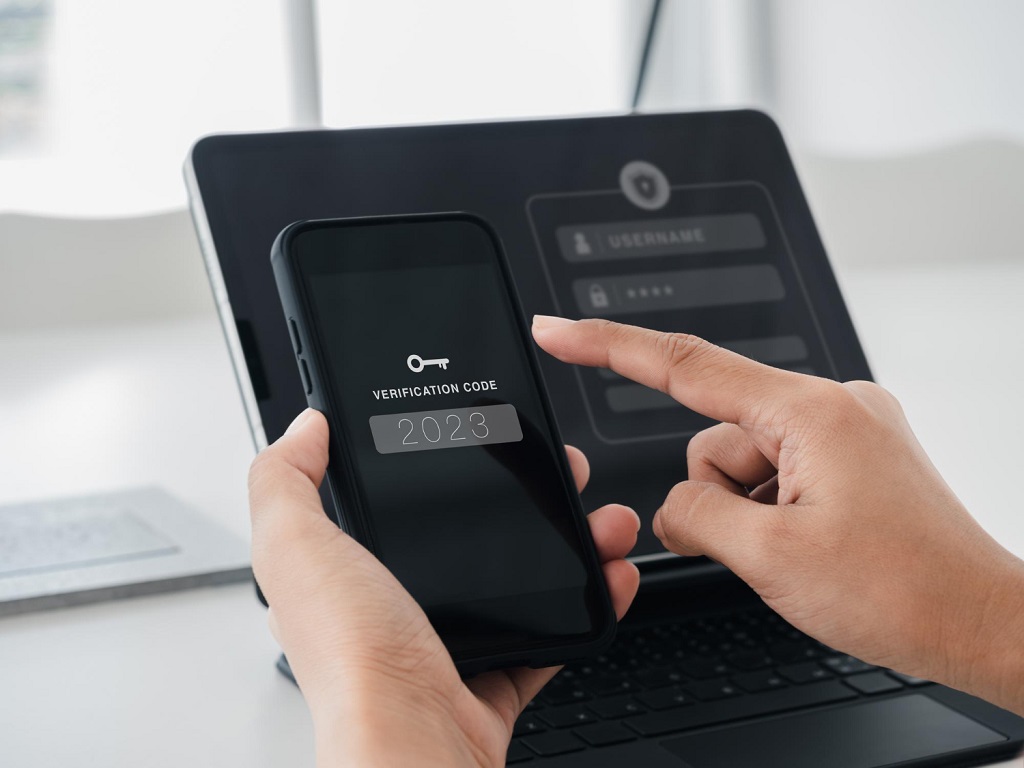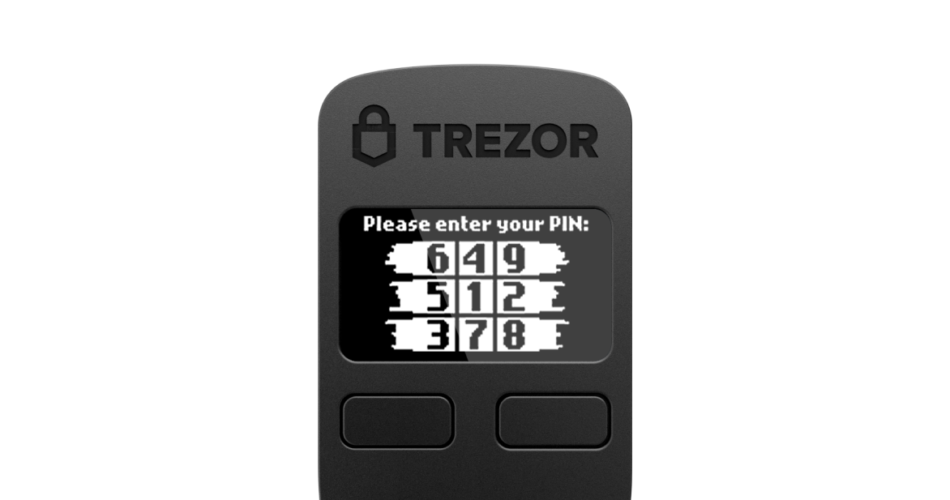In the rapidly evolving world of cryptocurrencies, one term has been gaining significant attention: non-custodial wallets. But what exactly are they, and why are they becoming so important in the crypto space? This comprehensive guide will delve into the intricacies of non-custodial wallets, their benefits, potential drawbacks, and why they could be the future of crypto transactions.
Table of Contents
Understanding Cryptocurrency Wallets
Cryptocurrency wallets are digital tools that allow users to store, send, and receive digital currencies like Bitcoin, Ethereum, and many others. They come in various forms, each with its unique features and security measures.
Primary Types of Cryptocurrency Wallets
There are two primary types of cryptocurrency wallets: custodial and non-custodial wallets.
Non-custodial wallets, or self-custodial wallets, are cryptocurrency wallets where the user has complete control over their funds. This means that only the user has access to the private keys or seed phrase associated with their cryptocurrency. In other words, the user has full custody of their assets and is responsible for their security.
The main difference between these two types of wallets lies in who has control over the private keys, which are the critical pieces of information used to authorize transactions in the blockchain network.
Custodial vs Non-Custodial Wallets Chart
| Custodial Wallets | Non-Custodial Wallets | |
|---|---|---|
| Control Over Private Keys | The service provider or third party has control over the private keys. | The user has full control over the private keys. |
| Security | The service provider is responsible for security, including protection against hacks and theft. | The user is responsible for security. If the private keys are lost, the funds are irretrievable. |
| Accessibility | Access to funds can be restricted by the service provider. For example, the provider may set withdrawal limits. | The user has unrestricted access to their funds at all times. |
| Privacy | Transactions can be tracked and personal information may be required by the service provider for KYC (Know Your Customer) procedures. | Transactions are generally more private, as no third party is involved. |
| User Experience | Typically user-friendly with customer support available. Suitable for beginners. | May require more technical knowledge to operate. The user is their own customer support. |
| Recovery | If a user forgets their password, it can be reset with the help of the service provider. | If a user loses their private keys or forgets their password, the funds are typically irrecoverable. |
| Ownership | The user doesn’t truly own their funds as the private keys are held by the service provider. | The user truly owns their funds as they hold the private keys. “Not your keys, not your coins” doesn’t apply here. |
Deep Dive into Non-Custodial Wallets
How Non-Custodial Wallets Work
Non-custodial wallets are a type of cryptocurrency wallet where the user has complete control over their private keys and, by extension, their funds. When you create a non-custodial wallet, you’re typically given a private key or a seed phrase (a series of words that can generate your private key). This information is not stored with any third party, and it’s crucial that you keep it safe. If you lose it, you lose access to your funds, and there’s no way to recover it.
Benefits of Using Non-Custodial Wallets
- Control Over Private Keys: The most significant advantage of non-custodial wallets is that you have full control over your funds. There’s no need to trust a third party to keep your cryptocurrencies safe. As the saying goes in the crypto community, “Not your keys, not your coins.” With non-custodial wallets, the keys are indeed yours.
- Enhanced Privacy: Non-custodial wallets offer greater privacy than their custodial counterparts. Since there’s no third party involved, there’s no need to share personal information or go through KYC (Know Your Customer) procedures.
- Reduced Risk of Centralized Failures: With a non-custodial wallet, you’re not relying on a third party to secure your funds. This means you’re not at risk if the third party is hacked, goes out of business, or if their systems fail.
Potential Drawbacks of Non-Custodial Wallets
- Responsibility for Security: While having control over your private keys can be seen as a benefit, it also comes with increased responsibility. You need to ensure your private keys are stored securely. If they’re lost or stolen, there’s no way to recover your funds.
- Difficulty in Recovery: If you lose your private keys or forget your password, recovering your funds can be challenging, if not impossible. Unlike custodial wallets, where you can reset your password with the help of the service provider, non-custodial wallets offer no such option.
Choosing a Non-Custodial Wallet
Factors to Consider When Choosing a Non-Custodial Wallet
Security Features
The most important factor to consider is the security features of the wallet. Look for features like two-factor authentication, biometric login, multi-signature support, and encryption of the private keys. Remember, in a non-custodial wallet, you are responsible for the security of your funds.
User Interface
The wallet should have an intuitive and user-friendly interface. You should be able to easily navigate through the wallet, make transactions, and access various features without any confusion.
Supported Cryptocurrencies
Depending on the cryptocurrencies you own or plan to own, you need to ensure that the wallet supports those cryptocurrencies. Some wallets support hundreds of different cryptocurrencies, while others only support a few.
Customer Support
Even though you have full control over your funds in a non-custodial wallet, good customer support can be invaluable. Check if the wallet provider offers prompt and helpful customer support.
Top Non-Custodial Wallets in the Market
Hardware Non Custodial Wallets List
| Wallet | Description | Key Features | Supported Cryptocurrencies | Price |
|---|---|---|---|---|
| Ledger | Ledger offers a variety of hardware wallets like Ledger Nano S and Ledger Nano X. | High security, user-friendly interface, supports a wide range of cryptocurrencies. | Over 1,500 cryptocurrencies including Bitcoin, Ethereum, XRP, and more. | From 90$ |
| Trezor | Trezor is one of the most trusted hardware wallets in the market. It offers two models: Trezor One and Trezor Model T. | High security, intuitive user interface, supports a wide range of cryptocurrencies. | Over 1,000 cryptocurrencies including Bitcoin, Ethereum, XRP, and more. | From 80$ |
| KeepKey | KeepKey is a simple hardware wallet that secures Bitcoin, Ethereum, Litecoin, Dogecoin, Dash, and Namecoin. | Virus and malware proof, works on PC, Mac, Linux, and Android. | Bitcoin, Ethereum, Litecoin, Dogecoin, Dash, and Namecoin. | $49 |
| ELLIPAL | ELLIPAL is a mobile-oriented and versatile hardware wallet. | Large touchscreen, mobile-oriented, QR code transactions. | Supports multiple currencies including Bitcoin, Ethereum, XRP, and more. | $149 |
| Tangem | Tangem offers a smart card for digital assets. | NFC communication, high security, easy to use. | Bitcoin, Ethereum, XRP, Cardano, Binance Coin, Kaspa, Chia and more. | Varies by model |
| SafePal | SafePal provides secure, simple, and enjoyable crypto management solution for the masses. | Wireless transactions, high security, easy to use. | Supports 1,000+ cryptocurrencies. | $39.99 |
| BitBox | BitBox is a minimalist hardware wallet from Switzerland. | Dual chip protection, easy backup on microSD, transparent security. | Bitcoin, Litecoin, Ethereum, and ERC20 tokens. | $109 |
| Coldcard | Coldcard is an ultra-secure Bitcoin hardware wallet. | True air-gap operation, physical security, partial-signed Bitcoin transactions. | Bitcoin only. | $119.97 |
Please note that the prices are subject to change and it’s always a good idea to visit the official website for the most accurate and up-to-date information.
List of Software Non Custodial Wallets
| Wallet | Platform | Supported Cryptocurrencies | Key Features | Website |
|---|---|---|---|---|
| MetaMask | Web, iOS, Android | Ethereum and ERC20 tokens | Integrated with numerous DApps, Built-in coin purchasing, Secure identity vault | Visit Site |
| Coinbase Wallet | iOS, Android | Bitcoin, Ethereum, Ethereum Classic, and 500+ more | DApp browser, User-controlled private keys, Easy to use interface | Visit Site |
| XDEFI Wallet | Web | Multiple assets across various networks | Multi-chain support, High security, User-friendly interface | Visit Site |
| Exodus | Web, Desktop, iOS, Android | 100+ cryptocurrencies | Live charts & portfolio, Built-in exchange, 24/7 human support | Visit Site |
| Coinomi | iOS, Android, Windows, MacOS, Linux | 1,770+ blockchain assets | Enhanced privacy/anonymity, Multi-chain support, Zero fees for sending and receiving transactions | Visit Site |
| Trust Wallet | iOS, Android | Multiple cryptocurrencies including ERC20 and BEP2 tokens | DApp browser, Staking, User-controlled private keys | Visit Site |
| Electrum | Windows, MacOS, Linux, Android | Bitcoin | Cold Storage, Multisig, Add-ons support, SPV verification | Visit Site |
Best Non-Custodial Wallet

The best non-custodial wallet, according to Wooly’s choice, is the Trezor Model One. This hardware wallet is renowned for its security and ease of use, making it an excellent choice for both crypto newcomers and security experts.
Key Features of Trezor Model One:
- Secure Connection: The wallet connects securely via USB-A and offers a two-button pad for easy navigation.
- Supported Assets: Trezor Model One supports over 1000+ digital assets, including Bitcoin, Litecoin, Ethereum, and all ERC-20 tokens.
- Trezor Suite: The wallet is managed through the Trezor Suite, a user-friendly application available for desktop, browser, Android, and iOS. The suite allows users to send, receive, and manage coins with confidence. It also offers features to buy, sell, and trade coins securely.
- Advanced Security Features: The wallet provides an offline security layer with a physical security check for each transaction. It also supports PIN and passphrase protection for enhanced security.
- In the Box: The package includes the Model One device, a USB-A cable, two recovery seed cards, and Trezor stickers.
Trezor Model One is designed to keep your coins safe and build your confidence when managing crypto assets. It allows you to store and protect your keys, passwords, financial information, and other sensitive data securely on the world’s first crypto hardware wallet. Each transaction is independently verified and physically confirmed directly on your Trezor Model One hardware wallet, ensuring complete confidence in your transactions.
How to Set Up a Non-Custodial Wallet

Setting up a non-custodial wallet involves a few key steps:
- Choose the Right Wallet: The first step is to choose the right non-custodial wallet that suits your needs. Consider factors such as the wallet’s security features, the cryptocurrencies it supports, its user interface, and customer support.
- Download and Install: Once you’ve chosen a wallet, download the wallet application from a trusted source (like the official website or app store) and install it on your device.
- Create a New Wallet: Open the application and select the option to create a new wallet. You will be asked to create a password. Make sure to choose a strong password that you will remember.
- Secure Your Wallet: The application will provide you with a seed phrase (a list of words). Write down this seed phrase and store it in a secure location. This seed phrase is the only way to recover your wallet if you lose access to your device. Never share this seed phrase with anyone, and avoid storing it digitally to prevent it from being stolen by hackers.
- Set a Strong Password: Set a strong password to protect your wallet. Some wallets may also offer additional security features like two-factor authentication.
- Receive Cryptocurrency: Once your wallet is set up, you can receive cryptocurrency by sharing your wallet address or QR code. To send cryptocurrency, you will need the recipient’s wallet address.
- Backup Your Wallet: Most wallets will provide an option to backup your wallet. This usually involves writing down a seed phrase or private key and storing it in a safe place. This is crucial as it allows you to recover your funds if your device is lost, stolen, or broken.
Remember, the most important part of setting up a non-custodial wallet is securing your seed phrase. If you lose it, you lose access to your funds. Always keep your seed phrase in a secure, offline location.
Best Practices for Using Non-Custodial Wallets

Using a non-custodial wallet comes with the responsibility of ensuring the security of your digital assets. Here are some best practices for using non-custodial wallets:
- Secure Your Private Keys: The private keys to your wallet should be kept secure at all times. Never share them with anyone and avoid storing them online where they could be vulnerable to hacking.
- Backup Your Wallet: Make sure to backup your wallet and store this backup in a secure location. Most wallets will provide a seed phrase that can be used to recover your wallet and funds if necessary.
- Use Strong Passwords: When setting up your wallet, choose a strong password that would be hard for others to guess. Consider using a password manager to generate and store complex passwords.
- Enable Two-Factor Authentication: If your wallet supports it, enable two-factor authentication (2FA) for an additional layer of security. This typically involves linking your wallet to a mobile device and using a secondary code to access your funds.
- Keep Software Up to Date: Regularly update your wallet software to ensure you have the latest security enhancements and features.
- Beware of Phishing Attempts: Be cautious of emails, websites, or social media messages asking for your wallet information. Always double-check the source and never provide your private keys or seed phrase.
- Consider Using a Hardware Wallet: If you’re storing a significant amount of cryptocurrency, consider using a hardware wallet. These wallets store your private keys offline on a physical device, providing an extra layer of security.
- Regularly Monitor Your Wallet: Regularly check your wallet to ensure that all transactions are as expected. If you notice any unauthorized transactions, take immediate steps to secure your wallet.
- Use Trusted Networks: Avoid accessing your wallet from public or untrusted internet connections, which could be insecure. If you must use a public network, consider using a VPN for added security.
Remember, the security of a non-custodial wallet largely depends on how well you can protect your private keys and seed phrase. Always be cautious and prioritize the security of your digital assets.
Future of Non-Custodial Wallets
The future of non-custodial wallets is promising and is likely to be shaped by several key trends:
- Integration with Smartphones: As smartphones become increasingly powerful and ubiquitous, they are set to play a significant role in the future of non-custodial wallets. Some smartphone manufacturers are already integrating non-custodial hardware wallets into their devices. For example, the Samsung Galaxy S10 and later models have a built-in cryptocurrency wallet that allows users to store their private keys on the device itself. This trend is likely to continue, with more smartphone manufacturers offering built-in non-custodial wallets.
- Improved User Experience: One of the challenges with non-custodial wallets is that they can be difficult for beginners to use. However, wallet providers are investing in improving the user experience, making these wallets more accessible and easier to use. This includes more intuitive interfaces, better customer support, and clearer instructions for securing and recovering wallets.
- Increased Privacy and Security Features: As concerns about privacy and security grow, non-custodial wallets are likely to offer more advanced features in these areas. This could include better encryption technologies, more robust two-factor authentication, and improved privacy features to help users protect their identities.
- Interoperability: As the cryptocurrency ecosystem grows, there’s an increasing need for wallets that can support a wide range of cryptocurrencies and integrate with various blockchain platforms. Future non-custodial wallets are likely to be more interoperable, making it easier for users to manage and transact with different cryptocurrencies.
- Regulation and Legal Recognition: As cryptocurrencies become more mainstream, there’s likely to be more regulation around non-custodial wallets. This could lead to greater legal recognition and protection for users of non-custodial wallets, but it could also introduce new compliance requirements.
- Decentralized Finance (DeFi) Integration: Non-custodial wallets are likely to become increasingly integrated with DeFi platforms, allowing users to easily participate in DeFi activities like lending, borrowing, and earning interest on their cryptocurrencies.
In conclusion, the future of non-custodial wallets looks bright, with technological advancements, improved user experience, and increased adoption of cryptocurrencies driving their evolution. However, users of non-custodial wallets should also be prepared for potential challenges, including regulatory changes and the need for increased security awareness.
Conclusion
In conclusion, non-custodial wallets, also known as self-custodial wallets, are an essential component of the cryptocurrency ecosystem. They offer users full control over their digital assets, providing a level of security and privacy that is not possible with custodial wallets. However, they also require users to take full responsibility for the security of their assets, including safeguarding their private keys and seed phrases.
The choice of a non-custodial wallet should be based on several factors, including its security features, the cryptocurrencies it supports, its user interface, and the quality of its customer support. There are numerous non-custodial wallets available in the market, both hardware and software, each with its unique features and strengths.
The future of non-custodial wallets is promising, with trends such as smartphone integration, improved user experience, increased privacy and security features, interoperability, and DeFi integration shaping their evolution. However, users should also be prepared for potential challenges, including regulatory changes and the need for increased security awareness.
Ultimately, the use of non-custodial wallets is a powerful expression of the ethos of cryptocurrency – empowering individuals to have full control and responsibility over their own digital assets. As the cryptocurrency market continues to mature and evolve, non-custodial wallets are likely to become even more user-friendly and secure, further accelerating the adoption of cryptocurrencies.
FAQs
What is a non-custodial wallet?
A non-custodial wallet, also known as a self-custodial wallet, is a type of cryptocurrency wallet where the user has complete control over their funds. This means that only the user has access to the private keys or seed phrase associated with their cryptocurrency.
What’s the difference between a custodial and a non-custodial wallet?
The main difference between a custodial and a non-custodial wallet lies in who has control over the private keys. In a custodial wallet, a third-party service provider holds the private keys on behalf of the user. In a non-custodial wallet, the user has full control over their private keys and therefore their funds.
Is Coinbase Wallet non-custodial?
Yes, Coinbase Wallet is a non-custodial wallet. This means that only you have access to your private keys and control over your funds.
Is Trust Wallet non-custodial?
Yes, Trust Wallet is a non-custodial wallet. It gives users full control over their private keys and funds.
Is MetaMask a non-custodial wallet?
Yes, MetaMask is a non-custodial wallet. It allows users to control their private keys and manage their cryptocurrencies independently.
How to create a non-custodial wallet?
To create a non-custodial wallet, you need to:
1. Choose a non-custodial wallet that suits your needs (software is the easiest option).
2. Download and install the wallet application from a trusted source.
3. Open the application and create a new wallet.
4. Secure your wallet by writing down the provided seed phrase and storing it in a secure location.
5. Set a strong password to protect your wallet.
You can now receive and send cryptocurrencies using your non-custodial wallet.


